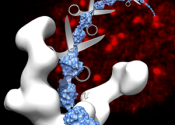New anti-malaria drug findings reported
Artemisinin is derived from the leaves and flowers of the annual mugwort (Artemisia annua), and has been used in traditional Chinese medicine for centuries. Chinese researcher Tu Youyou recently tested its effectiveness, ...
Jan 30, 2019
0
6








